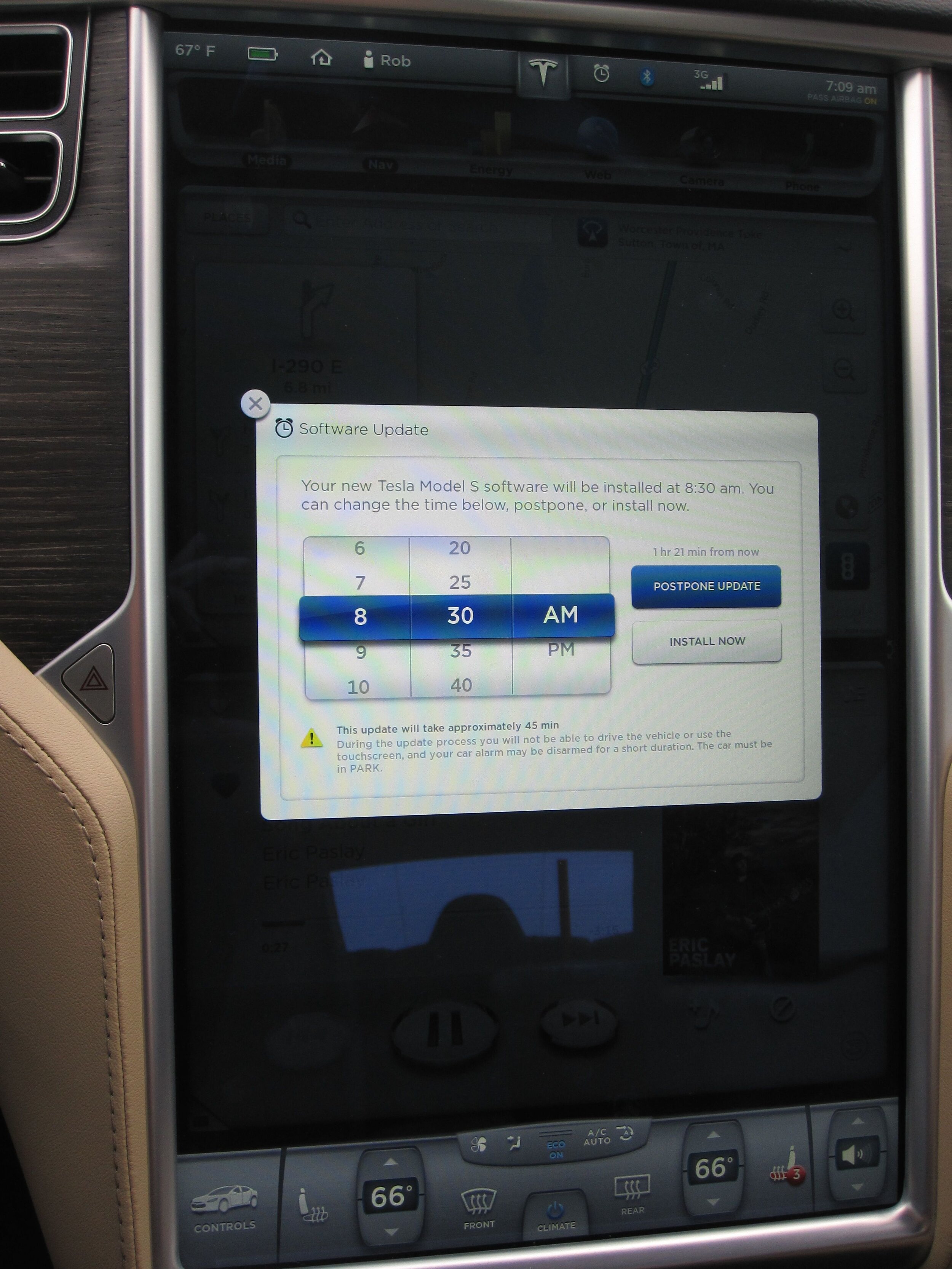
How Updates Increase EV Range And More
Much like your phone or your laptop, electric cars regularly receive updates from their manufacturers which offer a wealth of improvements – from adding improvements to the infotainment and navigation systems, all the way to improving the performance and efficiency of the vehicle.
Today we look at over-the-air updates, and why they mean that the car you buy may evolve into an even better model through software updates alone.
What are over-the-air updates?
As with any smart device, your car relies on a wealth of software to manage everything from the radio stations and apps that you can access, all the way through to how battery cooling is managed.
From time to time your car or connected app will alert you to a software update and detail what the changes are – and how that will change your experience as a user/driver.
These updates will be installed via WiFi and usually only take a matter of minutes to update, just like your phone.
How can these updates improve performance?
Unlike an internal combustion engine (ICE) vehicles, the performance of electric cars is as dependent on their software as much as their hardware – so getting an over-the-air update can act in the same way as tuning your engine, except its free.
While not all updates will offer performance gains, we have seen that companies such as Tesla have offered their customers extended range and greater efficiency through free updates.
Earlier this year Tesla’s 2020.4 update increased the range of their Model X cars from 328 miles (527km) to 351 miles (564 km), while their Model S versions saw an increase in range from 373 miles (600km) to 390 miles (627km).
This is all achieved without the need to physically change anything on your car, and means that you could end up with a significantly improved car over time, without any additional cost.
Continual improvements
You might be wondering why cars are being launched when they are capable of these improvements after a software update, and why they don’t have this range in the first place.
Setting software update time on Tesla infotainment screen Credit: Teslerati
The answer to this is twofold. Firstly, the technology behind electric cars is developing at a rapid pace, and this means that manufacturers are continually unlocking new potential in their models, allowing customers to drive further and have a better experience.
Secondly, the software restrictions that have been put in place allow manufacturers to ensure that customers have the best and safest car at the time of production. While removing some limitations might be possible, such as increasing top speed or acceleration performance, these can adversely affect battery lifespan or damage the motor.
Think of this in the same way as driving a petrol or diesel car at high revs over a long period of time, and how it would damage the engine.
While removing these restrictions might be pretty fun if you’re driving your car competitively on a racetrack, they’re pretty pointless in day-to-day life.
However, there have been instances where manufacturers have issued short-term updates to allow increased range beyond typical limits.
Back in 2017, Tesla issued a software update which unlocked the full battery capacity of its vehicles, adding an additional 30-40 miles (48-64km) range, so that owners could get safely out of the path of Hurricane Irma. This update ensured that owners could drive further on a single charge during the emergency evacuation, and the typical battery restrictions – which avoid overheating and overstressing, which reduce the lifespan of the battery – were applied once the storm had passed.
What else can these updates provide?
Much like your phone updates, many of the changes will be unseen by the driver and will only be understood by technical engineers – but there are some fun additions that can add real quality of life improvements.
For example, Ford has previously issued over-the-air updates to add Apple CarPlay and Android Auto to its infotainment systems, while others have used similar updates to add more detailed maps and satnav systems, or even to allow drivers to precondition their car to heat or cool the battery and cabin as needed for your comfort.
While the latter can make your car nice and toasty on a cold winter’s morning, the same technology can be used to pre-heat your battery in advance of using a public charger in order to minimise the time taken to charge your car.
How can I get over-the-air updates?
The process will depend on each manufacturer, but the best place to start is in your car’s app, infotainment system or on the manufacturer’s website.
What To Read Next
How Electric Car Conversion Works
Discover how you can convert converting your existing petrol, diesel or hybrid car to run as a fully electric vehicle – and why it’s cheaper and more sustainable than buying new
How Has Battery Technology Advanced?
Find out how battery technology has advanced, from the launch of the first lithium-ion battery in 1991 to the latest innovations in the field today




